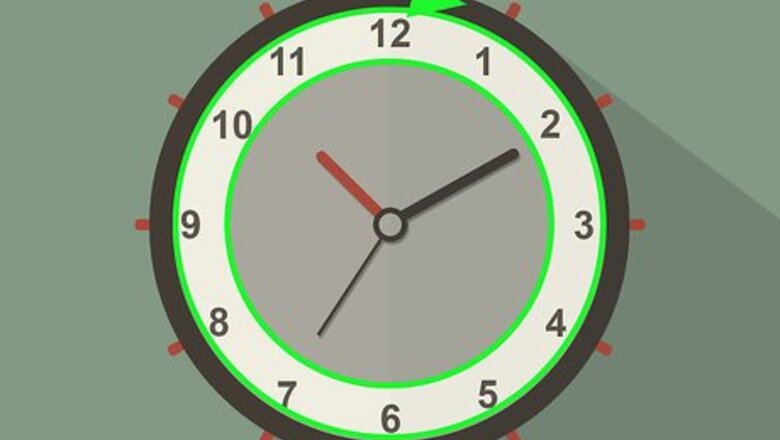
views
Reading an Analogue Clock
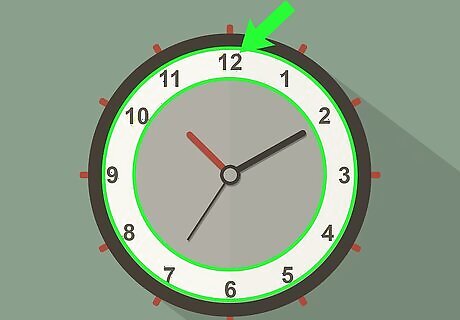
Learn how a clock is divided. A clock is divided into 12 sections. On top of the clock, you will see a "12." To the right of the "12," you will see a "1." If you follow the numbers, going right or "clockwise," they will move from "1" to "12." The numbers marking each sections are the hours. The sections between numbers are divided into 5-minute segments. Sometimes, there are tiny lines running along the clock dividing these segments.
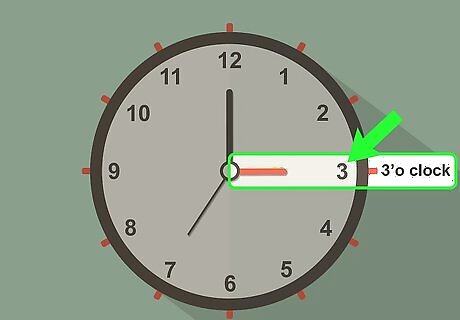
Use the little hand to read the hour. Clocks have 2 hands: a little hand and a big hand. The little hand marks the hour. Whichever number it's pointing to is the hour of the day. For example, if the little hand is pointing to "1," it's in the 1 o'clock hour.
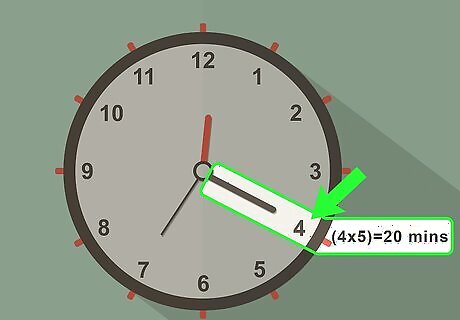
Use the big hand to read the minutes. Take the number that it is pointing to, and multiply it by 5 to get the minutes. When it is pointing to the "12," it is the top of the hour. If the big hand is an a mark between the numbers, count the marks, then add them to the minutes (clock number times 5). For example: If the big hand is pointing to "3," you'll know that it is 15 minutes past the hour. If the big hand is pointing to "12," it is the top of the hour. Read whatever number the little hand is pointing to. If the big hand is between "1" and "2," note what dash it is pointing to. For example, if it is on the 3rd dash after the "1," it is 8 minutes past the hour. (1 x 5 + the number of dashes).
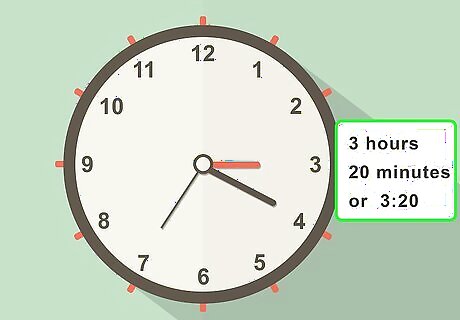
Put these together to get the time. Once you've found the hour and the minutes, you can tell time. For example: If the little hand is pointing to "1" and the big hand is pointing to "12," it is "one o'clock." If the little hand is pointing to "1" and the big hand is pointing to "2," it is "one-ten" or "ten minutes past one." If the little hand is pointing to "1," and the big hand is half-way between the "2" and "3," it is around "one-twelve" or "twelve minutes past one."
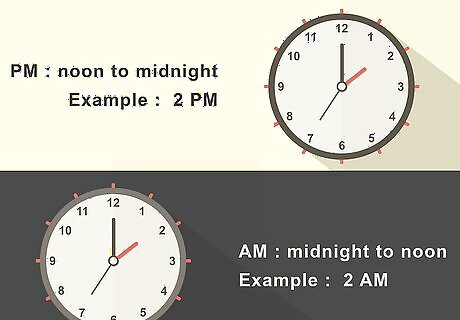
Differentiate between AM and PM. You can't tell AM or PM by reading a clock. You have to know the time of day. From midnight to noon the next day, the time is in AM. From noon to midnight, the time is in PM. For example, if it's early in the morning and the little hand is pointing to "9" and the big hand is pointing to "12," it's "9 o'clock AM."
Reading a Digital Clock
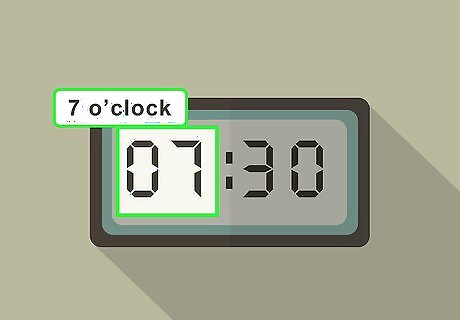
Read the first number to determine the hour. A digital clock is made up of 2 numbers separated by a colon. The first number on a digital clock marks the hour. For example, if the first number reads "2," it's in the 2 o'clock hour.
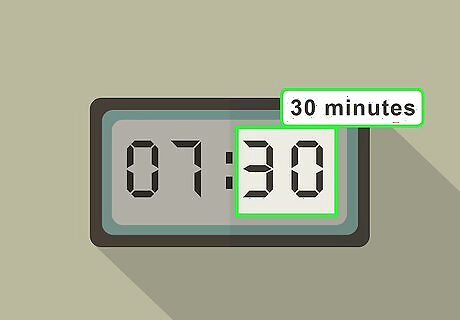
Read the second number to determine the minutes. The second number on a digital clock, found after the colon, marks the minutes into the hour. For example, if it reads "11," it is 11 minutes into the hour.
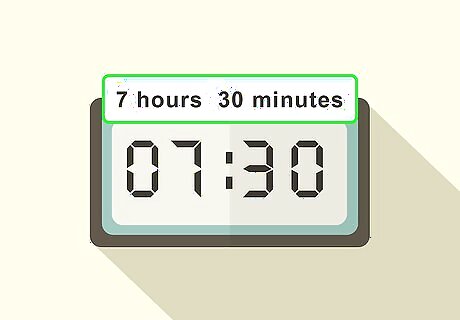
Put these together to get the time. Once you have both the numbers, you should be able to tell the time. If the clock reads "2:11," this means the time is "two-eleven" or "eleven past two."
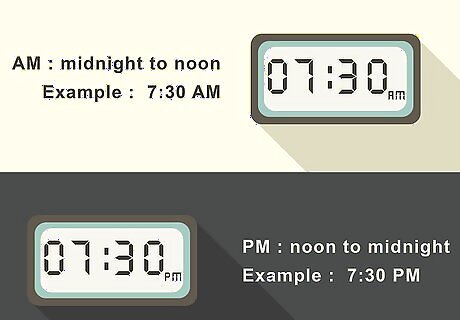
Determine if it's AM or PM. Some digital clocks will say if it's AM or PM somewhere on the clock. In the absence of this label, remember time of day. Times are marked as AM if they fall between midnight and noon. Times are marked as PM if they fall between noon and midnight.
Dealing with Variation
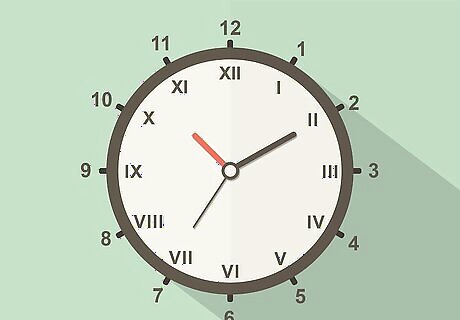
Learn roman numerals. Some clocks are marked by roman numerals, so learn roman numerals 1 to 12. An "I" is counted as 1, a "V" is counted as 5, and "X" is counted as 10. If a symbol appears before another symbol, it's subtracted from the value. If a symbol appears after another symbol, it's added to the value. 1 to 3 are simply written as "I, II, III." 4 is written as "IV." The "I" subtracts 1 from the "V" (which symbolizes 5), adding up to 5. 5 is then marked by a "V" and the numbers leading up to 10 are marked by adding "I" symbols. The number "VI" is 6, "VII" is 7, and so on. 10 is marked by an "X." Eleven and 12 are marked by adding to the "X." 11 is written as "XI" and 12 is written as "XII."
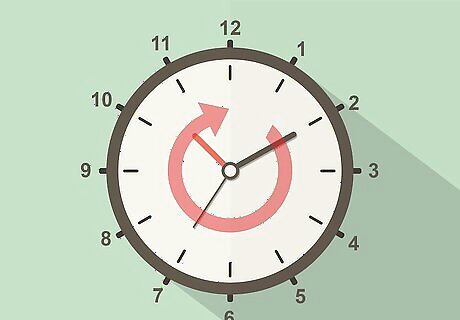
Read a clock without numbers. Not all clocks have numbers. They may have symbols marking the hours instead. Starting at the top of the clock, mentally mark this as twelve. Then, move to the right and count "1, 2, 3, 4..." and so on. This will help you determine which hour each symbol marks.
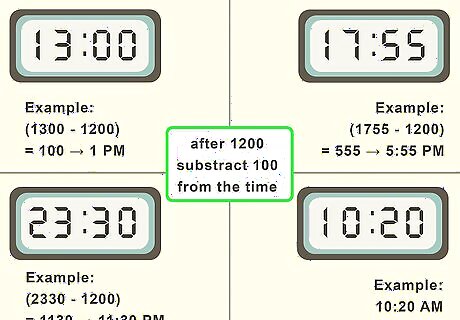
Convert military time to civilian time. Some digital clocks are written in military time but, luckily, this is easy to convert. From 1 AM to noon, military time is the same as civilian time. After noon, you have to do some work to determine time. Numbers lower "10" are marked by placing a zero in front of them. For example, 9 o'clock AM, is written as "0900." Subtract "1200" from the time to determine times that do not start with a zero. For example, 1300 subtracted from 1200 is 100. In military time, therefore, 1300 hours is 1 o'clock PM.




















Comments
0 comment